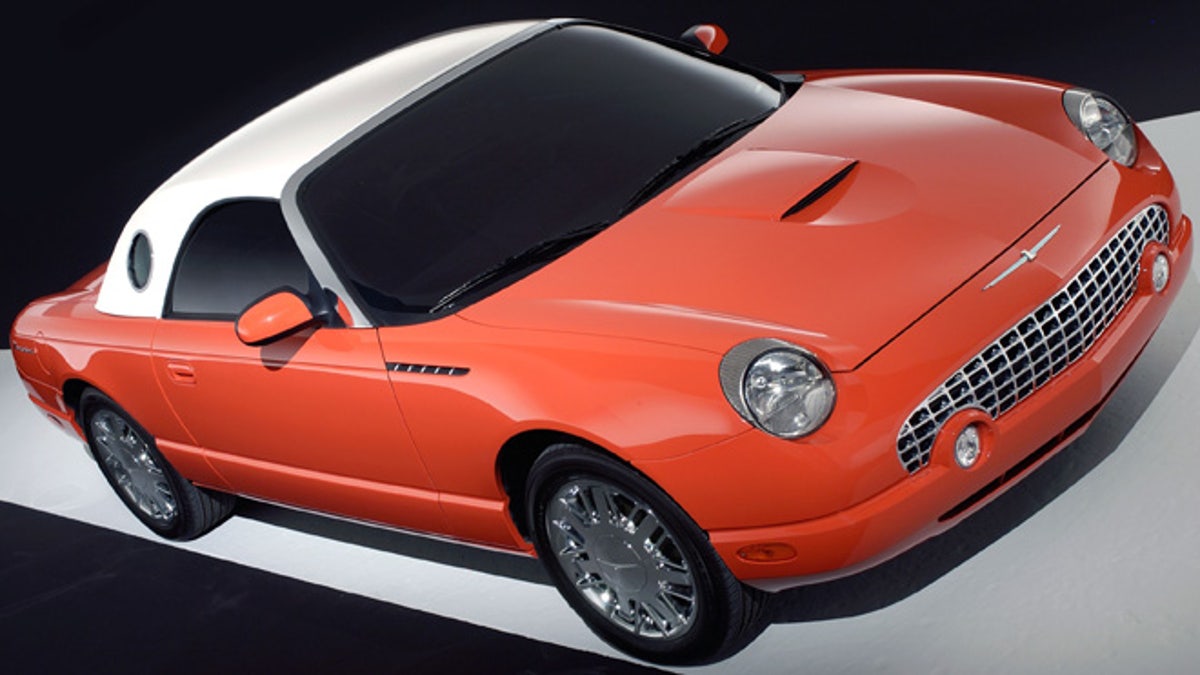
Limited Edition 007 Ford Thunderbird (Ford)
In the past we’ve dredged up some truly awful cars that did a well-deserved belly flop in the marketplace. Occasionally, though — whether it’s timing, market conditions or other external factors — bad things happen to good cars. Here’s a list of some of our favorite cars that were commercial failures, through no fault of their own:
- 2002-05 Ford Thunderbird: The last iteration of the famous T-Bird was a slow seller in all but its introduction year. The J. Mays design was faithful to the classic 1955-57 T-Bird while managing to look contemporary. Unfortunately, the market for luxury two-seaters was simply not what Ford had hoped it would be, and the T-Bird went away in 2005 (possibly for good). It’s a good bet to be a future collectible.
- 2004-06 Pontiac GTO: The 2000s-era GTO was another revival of a storied name. In true “car guy” fashion, then-GM product czar Bob Lutz cajoled recalcitrant GM brass into importing what was arguably the best car GM ever made, the Australian Holden Monaro as the new Pontiac GTO. The 5.7-liter Corvette V-8 gave the car performance on par with the best of 1960s muscle in an infinitely more refined package. Its only sin (besides mediocre gas mileage and high insurance rates) was that it looked a tad bland and came on the scene at a time when Pontiac was sinking fast. It remains one of the best performance bargains on the used car market and a possible future collectible.
- 2009 Pontiac G8 GXP: The second of Bob Lutz’s one-two Australian punch, the G8 was another product of Holden, GM’s Australian arm. The GXP sported a 6.2-liter V-8 with over 400 hp and was available with a Tremec six-speed manual transmission. It was essentially a half-price BMW M5 and quite possibly the greatest sport sedan produced by GM up to the time. Fewer than 2,000 were built before GM’s bankruptcy, which saw the Pontiac division eliminated. The mourning process for Pontiac and the G8 still goes on and is reflected in the strong resale prices for GXPs, especially those with a manual transmission.
- 1993-97 Mazda RX-7: The introduction of the Miata in late 1989 forced Mazda to take the third-generation RX7 up-market in both price and performance envelope. The sequential twin-turbo rotary delivered shattering performance with virtually no turbo lag. Rather than a comfortable GT, the RX-7 was a true lightweight sports car with limited trunk space and a harsh ride. Its inherent impracticality and punitive insurance rates limited the market for the RX-7 in the U.S., where it was a rare sight. In spite of winning nearly every automotive accolade, its availability in the U.S. market was brief, and good ones (which are few and far between) are already becoming collectible.
- 1993-98 Toyota Supra: A contemporary of the third-generation Mazda RX-7, the Supra was a bit less uncompromising in the ride and interior room departments. Performance was equally impressive and although not small, the car’s weight benefitted from the clever use of aluminum and plastics. Brakes were among the best ever fitted to a production car. But government regulations were tough on the big, brawny Supra: The advent of OBD II requirements were problematic, and the car was unavailable in California during its last year in the U.S. due to its inability to meet tougher emission standards. It became Japan-only forbidden fruit until it was discontinued in 2002. To date, there has been no successor.
Click here for more classic car stories from Hagerty, or here to sign up for our Classic Car Newsletter.